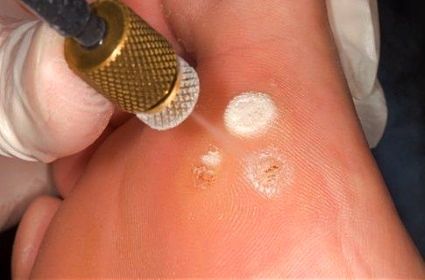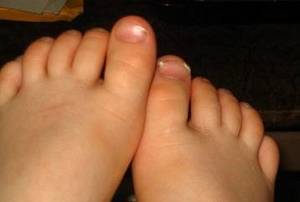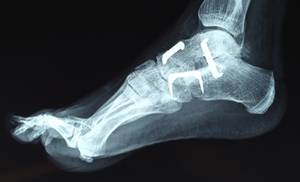Understanding Plantar Warts: The Basics
For starters, plantar warts (verrucae plantaris) are noncancerous skin growths that typically appear on the heels or balls of the feet, areas that endure most pressure. This pressure may also cause plantar warts to grow inward beneath a hard, thick layer of skin (callus). Recognizing these warts is the first step towards treatment — a topic thoroughly examined in subsequent sections.
Etiology: The Viral Culprit Behind Plantar Warts
Plantar warts are caused by specific strains of HPV which invade the body through tiny cuts or breaks on the bottom of the feet. This section highlights the contagion mechanisms and discusses the risk factors associated with developing plantar warts.
Symptoms and Identification
A plantar wart may be mistaken for a corn or callus, but certain signs, such as the interruption of the footprint pattern and the presence of tiny black dots (clotted blood vessels), help in its identification. Here, we describe the symptoms in detail, emphasizing when professional medical advice is warranted.
The Spread of Plantar Warts
This part of the article aims to dispel common myths about the spread of plantar warts and elucidates the real ways they can be transmitted. Emphasizing the scientific realities offers a clearer understanding of precautionary measures.
Preventive Measures
Empowering readers with preventive strategies is vital. This section deals with concrete steps to avoid contracting HPV, such as wearing protective footwear in communal areas and maintaining rigorous foot hygiene.
| Name of Solution/Action | How to Apply | Overall Effectiveness |
|---|---|---|
| Proper Foot Hygiene | Wash feet daily using soap and water and dry thoroughly, especially between the toes. | Highly effective if consistently practiced. Can significantly reduce the risk of infection. |
| Use of Protective Footwear | Wear shower shoes or flip-flops in public areas such as gyms, showers, or communal pools. | Very effective in communal areas where HPV may thrive on wet surfaces. |
| Moisture Management | Use foot powders or moisture-wicking socks to keep feet dry, as HPV thrives in moist environments. | Effective in reducing the environment conducive to HPV growth. |
| Avoid Direct Contact | Refrain from touching warts on other people or using their personal items like towels or shoes. | Effective in preventing direct transmission of HPV. |
| Skin Barrier Protection | Apply waterproof plasters on small cuts or lesions on the feet to avoid HPV infection. | Moderately effective; should be combined with other measures. |
| Immune System Support | Maintain a healthy diet, regular exercise, and adequate sleep to support immune function. | Indirectly effective; a strong immune system can fight off HPV infection more effectively. |
| Topical Treatments | Use salicylic acid treatments as directed by a healthcare professional to help prevent warts. | Effective when used as a preventive measure in individuals with a history of warts. |
Conventional Treatment Options: From Salicylic Acid to Cryotherapy
Although some plantar warts vanish without treatment, others require intervention. Here, we discuss over-the-counter options and in-office procedures, including the application of salicylic acid, cryotherapy, and surgical methods.

Innovative Therapies: Cutting-edge Advances in Plantar Wart Management
The field of dermatology constantly evolves, offering innovative therapies for managing plantar warts. Laser treatments, immunotherapy, and novel topical applications are evaluated and explained.
Home Remedies
While professional treatments are paramount, the complementary use of home remedies can be beneficial. This segment examines the efficacy and safety of using apple cider vinegar, tea tree oil, and other natural substances.
Living with Plantar Warts
Beyond medical treatments, living with plantar warts may require adjustments in daily activities and mental wellbeing. This section offers tips for comfort management, addressing footwear choices, and stress reduction techniques for those impacted.
The Future of Plantar Wart Treatment: Emerging Research and Hope
Research into preventing and treating plantar warts is ongoing, with promising avenues on the horizon. Vaccination against HPV strains and emerging antiviral agents are discussed with an eye towards future developments.
Conclusion
In conclusion, while plantar warts can be an irksome and persistent issue, understanding their nature and being acquainted with the full spectrum of treatment options can equip individuals with the means to manage and overcome them. With diligent care, preventative measures, and the appropriate use of both professional and home treatments, freedom from plantar warts is achievable, allowing individuals to step forward with confidence and comfort.









